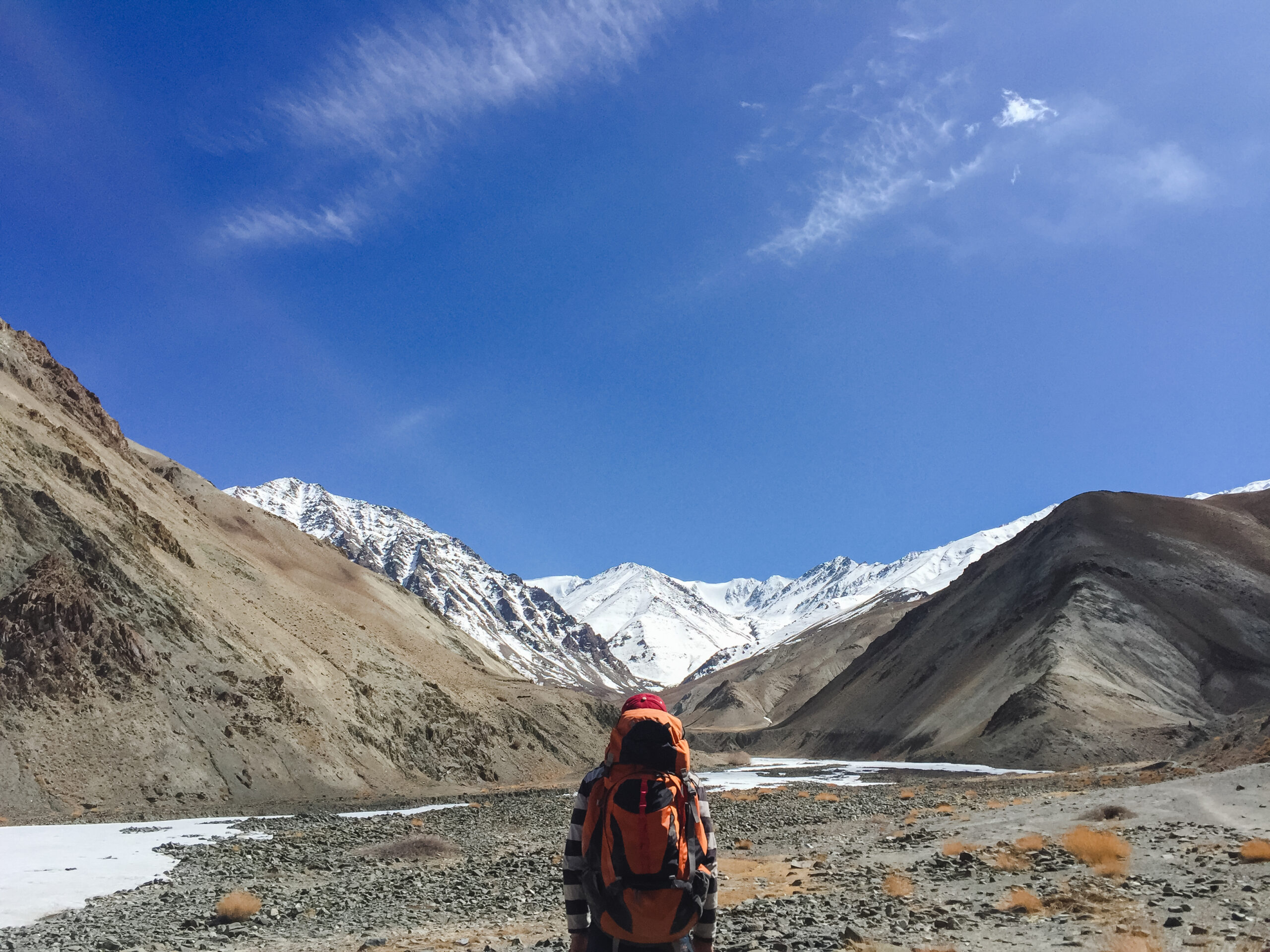
The Mustang Trek offers a unique journey into Nepal’s Last Forbidden Kingdom, nestled in the rain shadow of the Himalayas. This unforgettable trek, especially along the Upper Mustang route, invites adventurers to explore a remote land where Tibetan culture, ancient monasteries, and dramatic desert landscapes remain untouched by modern life. With its rich heritage and breathtaking scenery, the Mustang Trek is truly one of Nepal’s most extraordinary trekking experiences.
Why Trek Mustang?
Cultural Immersion
Upper Mustang was closed to outsiders until 1992, helping preserve centuries-old traditions in villages like Lo Manthang, the region’s ancient walled capital.
Unique Landscapes
The trek crosses a striking mountain desert of eroded cliffs, deep canyons, and windswept plateaus, with stunning views of Annapurna, Dhaulagiri, and Nilgiri.
Tibetan Influence
From colorful prayer flags to cliffside monasteries and chortens, Mustang’s culture is deeply linked to Tibetan Buddhism, offering a rare glimpse into a living heritage.
Adventure and Accessibility
The Mustang Trek is moderately challenging and suitable for trekkers with average fitness. Guided packages cover logistics, making it easier for beginners and experienced hikers alike.
Rain-Shadow Trekking (Monsoon Friendly)
Unlike other trekking regions in Nepal, Mustang lies in the rain shadow of the Himalayas. This means it’s one of the few treks ideal even during Nepal’s monsoon season (June–August).
Ancient Caves and Gompa
Discover mysterious caves carved into cliffs, believed to be over 2,000 years old, along with ancient monasteries adorned with sacred art and relics.
Vibrant Festivals
Time your trek with the famous Tiji Festival—a colorful three-day celebration with traditional dances, mask performances, and rituals that reflect Mustang’s deep spiritual heritage.
Authentic Homestay and Local Cuisine
Experience genuine hospitality through homestays and sample traditional dishes like Thukpa, Tsampa, and local yak products.
Photographer’s Paradise
The contrasting colors of red cliffs, white-washed villages, clear blue skies, and golden plateaus create incredible photo opportunities at every turn.
Trek Highlights
- Walk through the Kali Gandaki Gorge — the world’s deepest gorge, flanked by towering peaks
- Explore Lo Manthang — royal palaces, ancient cave dwellings, and vibrant markets
- Visit centuries-old monasteries — marvel at ancient art, murals, and sacred relics
- Experience the Tiji Festival (May) — a dramatic three-day celebration of good over evil
- Enjoy the dry climate — trek comfortably even during Nepal’s monsoon season
- See stunning contrasts between lush green valleys, red cliffs, and arid desert plateaus
- Discover Sky Caves of Mustang — mysterious man-made caves high on cliff faces, with ancient artifacts
- Witness Tibetan Buddhist rituals — prayer ceremonies, butter lamps, and monks’ chants in remote gompas
- Marvel at panoramic mountain views — Annapurna, Dhaulagiri, Nilgiri, and other giants of the Himalayas
- Cross ancient suspension bridges over deep gorges and fast-flowing rivers
- Stay in traditional villages — experience authentic hospitality in places like Kagbeni, Ghami, and Tsarang
- Explore hidden chortens and mani walls — stone structures carved with sacred mantras
- Spot wildlife of the highlands — blue sheep, Himalayan griffon vultures, and, with luck, snow leopards
- Ride a horse in Lo Manthang — just like locals, to explore the walled city and its surroundings
Best Time for Mustang Trek
Spring (March-May)
- Pleasant weather — Days are warm and nights are cool, with comfortable trekking conditions.
- Blooming landscapes — Though Mustang is dry, the lower sections (like Kagbeni) see wildflowers and fresh greenery.
- Tiji Festival — This is the most famous cultural event in Mustang, held in Lo Manthang. It features traditional masked dances, rituals, and ceremonies that draw both locals and visitors.
- Best for photography — Clear air, colorful terrain, and cultural vibrancy.
Autumn (September–November)
- Clear skies — Post-monsoon air is crisp, offering some of the clearest Himalayan views.
- Cool temperatures — Warm during the day, chilly at night. Perfect for trekking.
- High season for trekking — Popular time, so expect to meet other trekkers.
- Excellent visibility — Ideal for mountain photography and panoramic views.
Summer (June–August)
- Mustang’s rain shadow advantage — Unlike most of Nepal, Mustang stays dry because it lies behind the Himalayas.
- Good trekking conditions — While other regions face heavy monsoon rains, Mustang is largely unaffected.
- Vibrant landscapes — Occasional light rain can add a bit of green to the desert-like scenery.
- Fewer crowds — As most trekkers avoid Nepal’s monsoon, Mustang stays relatively peaceful.
Winter (December–February)
- Very cold — Temperatures can drop well below freezing at night, especially in Lo Manthang and higher villages.
- Snow possible — Higher trails may be blocked by snow, making trekking more challenging.
- Fewer trekkers — The trails are quiet and peaceful, offering solitude for those prepared for the cold.
- Stunning contrasts — Snow-dusted red cliffs and blue skies create dramatic scenery.
Sample Itinerary – Mustang Trek
- Day 1: Arrive in Kathmandu — Gateway to the Himalayas
- Day 2: Fly to Jomsom, drive to Kagbeni — Enter the ancient kingdom
- Day 3-7: Trek through Chhusang, Tangge, Yara, Dhi — Canyons, villages, cave monasteries
- Day 8-10: Explore Lo Manthang — Walled city, palaces, and cultural sites
- Day 11-12: Return via Ghami, back to Jomsom — Red cliffs, ancient villages
- Day 13: Fly to Kathmandu — Farewell to Mustang
Trek Difficulty
Moderate Trekking Grade
- The Mustang Trek is considered moderate — it’s not as physically demanding as some high-altitude treks like Everest Base Camp or Annapurna Circuit, but it’s more challenging than easy, low-altitude hikes.
- You need a reasonable level of fitness — if you can walk 5–7 hours a day on uneven terrain, you’ll manage fine.
Daily Walking
- Expect to walk 5 to 7 hours per day, depending on your pace and itinerary.
- Trails include gentle ascents and descents, dry riverbeds, and some steep sections, especially near passes and canyon crossings.
Altitude
- The highest points on the trek reach about 4,200 meters (13,800 feet) (e.g., Lo La Pass).
- While this isn’t extreme altitude, you may still feel the effects: mild headaches, breathlessness, or fatigue.
- The altitude gain is gradual, helping your body acclimate.
Terrain and Conditions
- The landscape is arid and rugged: think dusty trails, loose rocks, and exposed ridges.
- The region is remote — basic lodges or tea houses in villages, limited medical facilities, and no vehicle access in most parts of the trail.
Weather Factor
- The sun can be strong during the day, but it can get cold at night, especially above 3,000m.
- Strong winds are common in the Mustang valley, which can make walking tiring.
Difficulty Adjustment
- Guided treks can arrange support like porters or pack animals (horses/mules), so you carry only a light daypack.
- Itinerary flexibility allows you to add rest days or shorter walking days if needed.
Good for:
- Trekkers with decent fitness who are comfortable with multi-day hikes
- Those seeking a mix of cultural and natural exploration without extreme technical difficulty
Challenges to be aware of:
- Dry, dusty conditions can cause dehydration — drink plenty of water.
- Wind exposure can be exhausting — a scarf or buff helps.
- Limited amenities — you need to be comfortable with basic facilities.
The Mustang Trek is a journey into one of Nepal’s most captivating and mysterious regions. With its blend of natural beauty, Tibetan culture, and accessible adventure, Mustang is truly a must-visit destination for trekkers looking for a unique Himalayan experience. Looking to explore more high-altitude beauty and culture? Discover the Manang Trek — a breathtaking trail through the heart of the Annapurna region.
FAQs: Mustang Trek
1️. Is a permit required?
Yes. Upper Mustang is a restricted area. Trekkers need a special permit and a registered guide.
2️. How long is the trek?
Most itineraries take 10–14 days, depending on the route.
3️. Best time to go?
Spring and autumn are ideal. Mustang is also accessible in summer.
4️. How difficult is it?
Moderate—manageable for most fit trekkers. Main challenges: altitude and terrain.
5️ What cultural experiences await?
Ancient monasteries, Tibetan Buddhist rituals, and traditional village life.
6️. Are there festivals?
Yes, especially the Tiji Festival in May.
7️. What’s unique about the landscape?
Desert-like terrain, colorful cliffs, deep canyons, and Himalayan peaks.
8️. Can beginners do the trek?
Yes, with preparation and guided support.
DEX analytics platform with real-time trading data – https://sites.google.com/walletcryptoextension.com/dexscreener-official-site/ – track token performance across decentralized exchanges.
Privacy-focused Bitcoin wallet with coin mixing – https://sites.google.com/walletcryptoextension.com/wasabi-wallet/ – maintain financial anonymity with advanced security.
Lightweight Bitcoin client with fast sync – https://sites.google.com/walletcryptoextension.com/electrum-wallet/ – secure storage with cold wallet support.
Full Bitcoin node implementation – https://sites.google.com/walletcryptoextension.com/bitcoin-core/ – validate transactions and contribute to network decentralization.
Mobile DEX tracking application – https://sites.google.com/walletcryptoextension.com/dexscreener-official-site-app/ – monitor DeFi markets on the go.
Official DEX screener app suite – https://sites.google.com/mywalletcryptous.com/dexscreener-apps-official/ – access comprehensive analytics tools.
Multi-chain DEX aggregator platform – https://sites.google.com/mywalletcryptous.com/dexscreener-official-site/ – find optimal trading routes.
Non-custodial Solana wallet – https://sites.google.com/mywalletcryptous.com/solflare-wallet/ – manage SOL and SPL tokens with staking.
Interchain wallet for Cosmos ecosystem – https://sites.google.com/mywalletcryptous.com/keplr-wallet-extension/ – explore IBC-enabled blockchains.
Browser extension for Solana – https://sites.google.com/solflare-wallet.com/solflare-wallet-extension – connect to Solana dApps seamlessly.
Popular Solana wallet with NFT support – https://sites.google.com/phantom-solana-wallet.com/phantom-wallet – your gateway to Solana DeFi.
EVM-compatible wallet extension – https://sites.google.com/walletcryptoextension.com/rabby-wallet-extension – simplify multi-chain DeFi interactions.
All-in-one Web3 wallet from OKX – https://sites.google.com/okx-wallet-extension.com/okx-wallet/ – unified CeFi and DeFi experience.

Leave a Reply